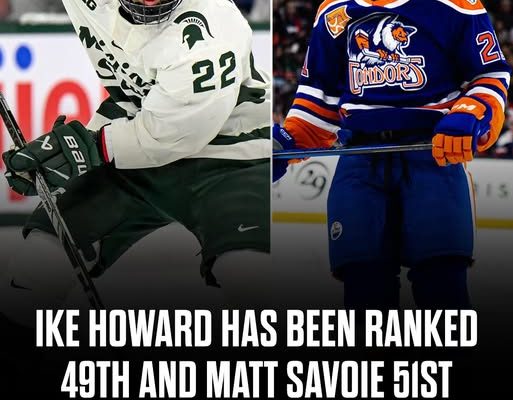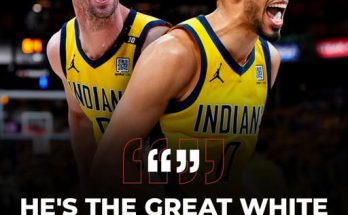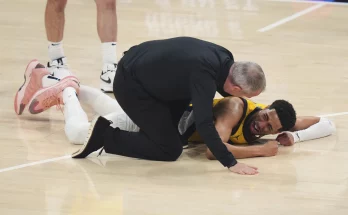When a respected voice in the NHL scouting world like Scott Wheeler of The Athletic releases his Top 100 NHL draft prospects, the hockey world pays attention. His rankings are among the most comprehensive and trusted in the hockey community, blending rigorous analysis, scouting insight, and future projection. That’s why it’s significant—not only for the players involved but for the organization as a whole—when two Edmonton Oilers prospects, Ike Howard and Matt Savoie, make the cut. Ranked at No. 49 and No. 53 respectively, Howard and Savoie are generating serious buzz in Oil Country and beyond, signaling a potential bright future for a team that is desperate to build sustainable talent around its aging superstars.
The Oilers have long relied on top-heavy talent, leaning heavily on Connor McDavid and Leon Draisaitl to drive their success. However, with cap constraints tightening and the need for depth scoring and fresh legs intensifying, the franchise’s ability to develop homegrown prospects has never been more vital. That’s where Howard and Savoie come in—not just as players with upside, but as potential building blocks who could shift the trajectory of the Oilers in the seasons to come.
Starting with Ike Howard, the young American forward has quietly but steadily climbed up draft boards throughout the last calendar year. Known for his high motor, vision, and ability to process the game at a quick pace, Howard has been a standout in junior tournaments and with the U.S. National Team Development Program. His skating has improved year-over-year, and his creativity in the offensive zone has been noted by scouts from multiple organizations. Howard doesn’t always wow with one particular skill, but it’s his complete game, maturity, and hockey IQ that have led analysts like Wheeler to project him as a top-50 prospect in this year’s class.
Howard has also shown flashes of leadership and adaptability. Whether slotted on the wing or down the middle, he has performed at a consistent level, which makes him a valuable asset in the eyes of development coaches. What especially intrigues the Oilers is his ability to play in all situations. Howard has penalty-killing experience, can man the second power play unit, and shows enough defensive awareness to be trusted late in close games. If he can continue developing his shot and upper-body strength, he could become a reliable two-way contributor at the NHL level, potentially filling in as a second- or third-line center in the future—a positional need the Oilers have often struggled to fill through free agency or trades.
Then there’s Matt Savoie, a name that carries a bit more weight in the junior hockey world. The dynamic forward was once viewed as a potential top-five pick in earlier draft projections, but a combination of injuries and questions about his size and long-term fit at center have caused him to slide slightly in some rankings. However, that doesn’t take away from the raw talent and offensive upside Savoie brings to the table. He’s electric in transition, has a lethal shot, and can create space with his elite edgework and lateral movement. If Howard is the steady, responsible type, Savoie is the high-octane gamebreaker—the kind of player who can change the outcome of a game with one shift.
Wheeler’s placement of Savoie at No. 53 might seem modest, but context is key. In an exceptionally deep draft class where scouts are split on the top 60 players, being ranked in the top 60 still places Savoie among elite company. For the Oilers, the presence of a player like Savoie in their pipeline represents more than just a developmental win—it’s a symbol of diversification. In recent years, Edmonton’s drafting has often leaned toward big, physical, Western Canadian-style players. With Savoie, they’re betting on skill, agility, and upside, all traits that modern NHL contenders are built around.
What’s also interesting about both Howard and Savoie is how well their timelines align with the Oilers’ looming roster questions. McDavid and Draisaitl are both under pressure to win now, but both also have uncertain contract situations in the long term. The arrival of competent, NHL-ready youth in two to three years could help retain those stars while simultaneously preparing the team for a post-core transition if necessary. In that sense, Howard and Savoie are not just prospects—they’re chess pieces in a larger strategic game the Oilers are playing against the clock.
Wheeler’s analysis doesn’t just stop at stats or highlight reels. His methodology includes live game viewing, video review, discussions with scouts and coaches, and statistical modeling. So when he includes Howard and Savoie in his Top 100, it’s not a fluke or an attempt to create hype—it’s based on observed trends, projected development arcs, and the overall consensus among hockey insiders. His inclusion of both players indicates that the Oilers have not just taken fliers in the draft, but have actually added players with legitimate NHL potential.
This kind of external validation is important for a franchise like Edmonton, which has often faced criticism for either mismanaging its draft capital or failing to properly develop talent. From Jesse Puljujärvi’s stagnation to the revolving door of bottom-six wingers that have come and gone, the Oilers’ history with prospect development has been a mixed bag. But in recent seasons, under the guidance of a more structured player development system, there’s reason to believe the tides are turning. Having two prospects in the top 60 is a sign that Edmonton’s scouting and drafting approach is evolving, moving toward a more modern, skill-based evaluation model.
It’s also worth noting the mental toughness both players have demonstrated. Howard has consistently answered questions about his size and durability with poise, and his performance in high-leverage games has turned skeptics into believers. Savoie, meanwhile, has rebounded from injuries with improved conditioning and a more balanced game, showing he’s not just an offensive flash in the pan but a player capable of making adjustments when needed. These traits are critical as they transition from juniors to pro hockey, where the grind becomes more taxing and competition is stiffer.
From a fan perspective, the buzz around these two players brings a sense of hope that has often felt fleeting in recent Oilers seasons. Yes, McDavid and Draisaitl continue to produce MVP-caliber performances. Yes, the team has flirted with contention. But without a strong supporting cast—particularly young players on entry-level deals who can contribute meaningfully—the team’s window remains fragile. Howard and Savoie represent the kind of homegrown value that every contender needs. If even one of them hits their ceiling, it could dramatically shift the Oilers’ roster depth and flexibility.
Looking ahead, the development path for both players will be closely watched. Whether they continue to grow in junior leagues, earn AHL opportunities, or get called up to the NHL in spot duty, their progress will be a litmus test for the Oilers’ organizational competence. How they’re managed, mentored, and utilized could ultimately determine whether they fulfill the promise that Wheeler and others see in them.
In a league where success is often determined by the margins—how well a team drafts, develops, and integrates young talent—the inclusion of Ike Howard and Matt Savoie in Scott Wheeler’s Top 100 is more than just a list mention. It’s a statement about the potential shift underway in Edmonton’s organizational philosophy. It’s a signal to fans that the team is preparing for more than just short-term fixes. It’s a sign that the Oilers are investing in a future that could finally bring the depth and balance needed to complement their superstars—and maybe, just maybe, deliver on the championship dreams that have long eluded them.



